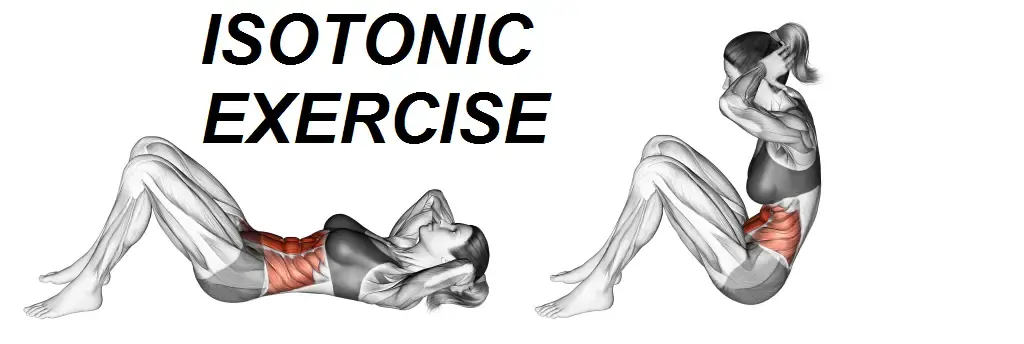Isotonic Exercise
What is an Isotonic Exercise?
Isotonic exercise is a type of physical activity in which muscles contract and expand throughout their range of motion.
Isotonic workouts need the muscles engaged in the activity to operate against continual resistance, often given by free weights, weight machines, or one’s body weight. The purpose is to produce muscular contractions that cause movement and improve muscle strength, endurance, and general fitness.
Force is produced when muscles contract tightly, shortening them.
Conversely, isometric contractions cause muscles to lengthen without altering in length.
In contrast to isokinetic exercise, an isotonic contraction maintains force constant as velocity varies. On the other hand, because of the length-tension link that occurs during a contraction, an isokinetic contraction keeps velocity constant even when force varies.
Forms of Isotonic contractions:
Auxotonic contractions are similar to isotonic contractions.
Isotonic exercises fall into two categories:
During a concentric contraction, a muscle shortens and increases internal tension to overcome resistance. In an eccentric state, resistance leads to muscular elongation.
- Concentric:
Although there is an external force tugging on the muscle, it is not as strong as the force the muscle produces during a shorter contraction. Tension peaks at the level parallel to the floor; tension diminishes above and below this point. This is known as a concentric contraction. This is the form that all exercises adopt.
- Eccentric:
Eccentric training is a type of strength training in which the target muscles are employed to control weight as it moves downward. Tension-induced lengthening begins in the muscle.
There are two key elements of eccentric contractions to be aware of. To begin with, tensions obtained might be far higher than the muscle’s full capability for producing tone tension. Second, increasing velocity does not affect tension.
Eccentric contraction has been linked to muscular damage and discomfort. activities with eccentric contractions have a smaller impact on muscular strength than activities with concentric contractions. However, because higher levels of tension are easier to achieve during eccentric contraction exercises, muscle hypertrophy may be superior to concentric contraction exercises, albeit at a higher level of resistance, because it generates more signals for muscle strength.
- Auxotonic contraction:
The previously built-up load diminishes as the blood flows out, necessitating less force to evacuate the remaining blood. Thus, stress is lessened.
What kinds of exercises are isotonic examples?
The majority of the things you do now are most likely isotonic. You may execute an isotonic workout by moving your joints and contracting your muscles in reaction to resistance.
This comprises:
- Resistance training exercises include pull-ups, curls, bench presses, and squats.
- Aerobic workouts include cycling and jogging.
- The bulk of sports movements (e.g., using a bat or football).
- Even seemingly insignificant tasks like painting a fence likely qualify as isotonic activities.
Difference between isometric and isotonic exercises:
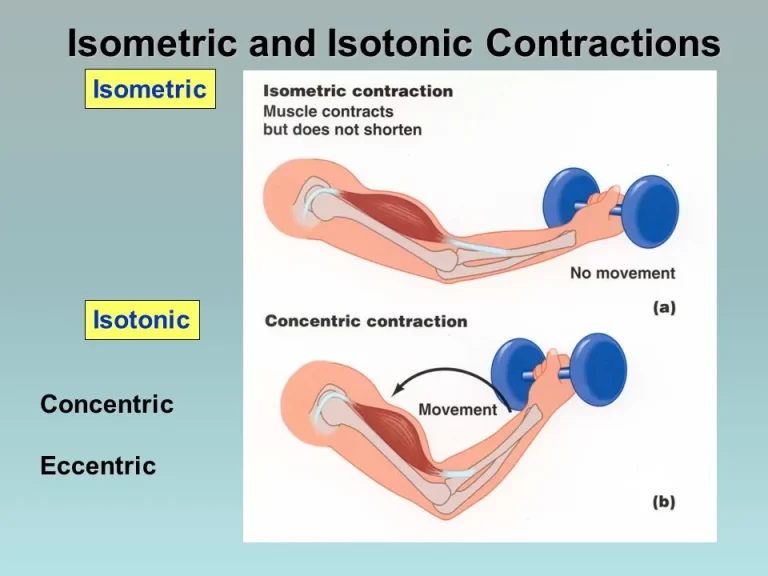
Isotonic exercise appears to encompass practically everything. Is there an exercise that isn’t isotonic? Yes, there is an isometric workout.
When you activate a muscle isometrically, your joints do not move, nor does the muscle lengthen or shorten.
Isometric muscular contraction workouts are less common than they previously were, but you should be aware of some of them.
Stationary workouts that emphasize continual muscular tension include planks, wall sits, and other yoga positions.
These exercises still perform a muscular function, but not in the same way as isotonic workouts do, whereas isometric activities contract and then extend the muscle.
Who is appropriate for Isotonic exercises?
The majority of people can benefit from isotonic exercises. You may feel that isotonic workouts are simply strength training and are solely useful for developing huge biceps or pecs.
Depending on whether you want to bulk up or lose weight, you may modify these exercises by adjusting the weight, number of sets, repetitions, and rest periods.
You may also tailor the intensity to your current level of athletic growth, whether you’re a professional athlete or just getting started in the fitness sector.
Isotonic exercises are particularly significant as people age. Obstruction preparation targets bone thickness, which often decreases with age and leads to osteoporosis.
The one exception, and those who may wish to avoid isotonic workouts, are individuals who are healing from an injury, particularly one to the joint. Isometric exercises may still be a safer alternative to some low-intensity isotonic workouts.
How to perform isotonic exercises?
Isotonic exercises have various forms that need mastery, especially when dealing with higher resistance.
However, the foundations are often the same. Throughout the exercise, try to keep your tension level consistent.
After all, the term “isotonic” implies this.
If you maintain your speed constant, the same movement might be used to conduct an isotonic workout.
To do so, raise and lower the weight (whether it’s a barbell, free weights, or your body weight) gently and methodically. Focus on how the eccentric and concentric contractions interact throughout the movement.
Examples of isotonic exercises:
Depending on your overall training goals, there are different methods to include isotonic workouts.
If you’re just starting, here’s an example workout targeting several muscle groups.
You’ve probably previously done some or all of these exercises throughout your workouts.
- Exercise 1: bench press
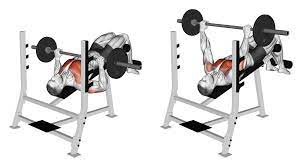
Despite stimulating various smaller stabilizer muscles and supplementary muscle groups, the bench press focuses largely on your pectoral muscles. This activity benefits anyone looking to improve their fitness.
To achieve your goals and reach your ideal level of fitness, change your weight. You can substitute push-ups if you prefer a bodyweight workout or lack the equipment for bench presses.
- Exercise 2: pull-ups
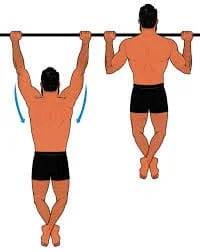
Pull-ups will mostly work your back and arms. The most amazing part about pull-ups is that they use your body weight, making it far more difficult to be hurt than putting a massive free weight on top of you.
- Exercise 3: squats

Squats: Squats are a great exercise to work on your lower body. dy. As with the bench press, adjust the weight or even do the exercise unweighted if required.
- Exercise 4: sit-ups
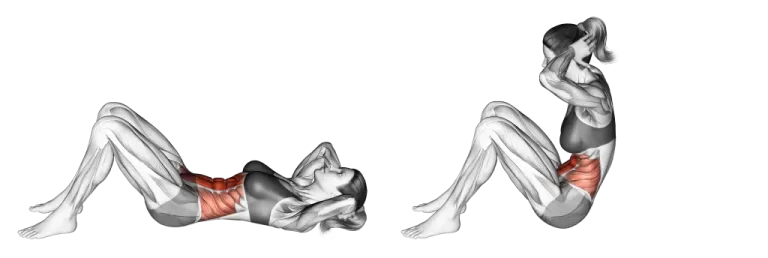
Lastly, to strengthen your core and abdomen, try some sit-ups. The isotonic movement of sit-ups stimulates your abdominal muscles to contract, which, if done frequently, will most likely result in a six-pack, which most of us desire.
Benefits of isotonic exercise:
Many isotonic workouts are well-maintained since they do not require any specialized equipment or supplies that are not commonly found in gyms. Furthermore, because many isotonic workouts are simple for most individuals to complete, they may be applied to everyday activities outside of the gym.
You can maintain your weight loss by exercising. According to research, people who lose weight and keep it off permanently participate in regular physical activity.
- Enhanced muscular growth and strength.
- Improved muscle endurance
- Strengthening the whole range of motion (ROM).
- Improved range of motion during functional tasks.
- Increasing bulk by lifting heavy weights and progressively increasing resistance
- Practicing the movements your body needs for daily activities.
- Higher bone density.
- Improves cardiovascular health.
- Reduced body fat
- An increase in fat-free mass
- helps to keep your metabolism running smoothly as you become older.
So, you may incorporate a few isotonic exercises into your routine. Either way, you probably already work out in an isotonic manner.
Disadvantages of isotonic exercise:
While isotonic exercise has many benefits, there are certain drawbacks to consider:
- Injury risk: Isotonic workouts may exert a lot of strain on the muscles and joints, raising the risk of injury if proper form and technique are not used. Overuse injuries, such as tendinitis and muscular strains, can occur when the same muscles are overused and do not receive adequate rest and healing time.
- Limited muscle work and activation: Isotonic exercises frequently target only one or a few muscle groups at a time, which limits overall muscle activation and development. This might be a disadvantage for those looking to enhance their general strength and endurance.
- Plateauing: The body can adjust to isotonic activities over time, resulting in a plateau in progress. This suggests that it may be difficult to continue producing increases in physical strength, endurance, or other fitness goals without modifying the routines or adding higher resistance after a certain point.
- Requirement of types of equipment: It is necessary to employ equipment like dumbbells, resistance bands, or weight machines for many isotonic activities. For people who do not have access to a gym or home training equipment, this may be a disadvantage.
- Not for everyone: Isotonic workouts are not suitable for everyone, particularly those who have serious medical conditions or injuries. People who have joint problems may need to refrain from engaging in physical activities that put an undue amount of strain on their joints. Before starting any new exercise regimen, talk with a healthcare practitioner.
Risks associated with isotonic exercises:
Isotonic exercise involves significant risks, especially if done incorrectly or if the person has underlying medical conditions.
Isotonic exercise has various dangers, including:
- muscular strain: Overuse or poor technique during isotonic training can induce muscle tension, resulting in pain, edema, and a limited range of motion.
- Joint injury: Sprains, strains, and dislocations can develop in joints that are not properly supported during isotonic exercise.
- Cardiac events: Isotonic exercise, especially in individuals with underlying cardiac difficulties, can be taxing on the cardiovascular system.
- Dehydration: If someone does not drink enough fluids before, during, and after an isotonic exercise session, they may get dehydrated as a result of sweating.
- Overtraining: Participating in isotonic exercise too regularly or for too long can lead to overtraining, which can degrade performance and increase the risk of injury while also producing fatigue.
To reduce the risk of these potential risks, warm up properly before beginning any isotonic exercise routine, use good technique, and gradually increase the intensity and duration of the workout, Keep yourself hydrated and aware of your body’s signals to avoid overworking yourself. Before beginning any new fitness program, it is also recommended that you consult with a healthcare medical practitioner, particularly if you have any underlying medical conditions.
Summary
Isotonic workouts are one type of strengthening exercise that might benefit your health. The preceding article describes how to comply with isotonic exercises as well as which exercises to perform. The ideal type of exercise is one that you love and can perform regularly, and those who combine different activities reap the most benefits. Choose the workouts that are most appropriate for your objectives, present health, and personal preferences.
FAQ
What are the isotonic exercises?
Isotonic contractions change the length of a muscle while maintaining the same tension.
What are examples of isotonic exercise?
You might include the following isotonic workouts in your fitness plan.
Perform push-ups and pull-ups.
Sit-ups or crunches
Dumbbell tricep and bicep curls
Squats (knees behind toes, good technique)
Russian twists.
What is an isometric and isotonic training?
Isometric training keeps the muscle length constant while causing muscular development; in contrast, isotonic training modifies the muscle length while maintaining the same tension.
Which are two forms of isotonic contractions?
A concentric. A contraction is when a muscle shortens and tension builds to meet resistance. Eccentric contraction causes the muscle to stretch because the resistance is greater than the muscle’s power output.
Why is it called an “isotonic” contraction?
The ancient Greek term “isotonic” approximately means “same tension” or “same tone.” Isotonic training maintains constant muscular tension throughout the movement.
Is yoga isometric or isotonic?
Yoga uses both isometric and isotonic contractions. When you transition from one yoga pose to the next, your muscles become isotonic, which means they move. Isometric contractions are used to hold yoga positions in place. They do not move, and their muscle lengths and joint angles remain constant.
References:
- Parmar, D. (2023, December 13). Isotonic exercises – Type, Benefits, Examples – Mobile Physio. Mobile Physiotherapy Clinic. https://mobilephysiotherapyclinic.in/isotonic-exercises/
- Isotonic Training: Perfect Your Squats and Pushups. (2016, December 19). Healthline. https://www.healthline.com/health/fitness-exercise/isotonic-training
- Zieminski, S. (2023, June 12). 7 Isotonic Exercises Examples. Naked Nutrition. https://nakednutrition.com/blogs/fitness/isotonic-exercise-examples?srsltid=AfmBOopIWOikKH3uY5QsWmGx9CqfYaNCtmHZ0m54k8alOttWICw2TA9N

